Quick build, sorry if it looks bad
The situation in Germany during World War 2 was one that forced its aviation industry to continually supply solutions to counter growing Allied air superiority and the devastating day/night bombing campaigns. This provided something of a "clean canvas" approach for aviation engineers looking to make a name for themselves or further design theories. As turbojet technology progressed, this opened the door to some fantastic aircraft designs of which many never saw the light of day. The Focke-Wulf Fw "Flitzer" (meaning "Streaker" / "Flasher") became one of the war's forgotten fighter proposals, losing out to the Focke-Wulf's other product, the Ta 183 "Huckabein" by Hans Multhopp by the end. The Flitzer was also known under its project designation of "P.7" or "P.VII" for "Project Seven".
Design work on the fighter began during March of 1943 and was part of a greater Focke-Wulf company initiative to provide a single-seat, turbo-jet-powered solution for possible submission to the Luftwaffe. The earliest offering was known as Project VI ("P.6") which was more or less faithful to the P.7 - save for a slightly different canopy, fuselage, and air intake position. The resulting design utilized a centralized fuselage nacelle which blended into a swept-back wing mainplane assembly (swept at 32-degrees)). The cockpit was held under a canopy positioned aft of the nose cone with the planned turbojet engine installation at the rear. The single engine would be aspirated through a dual intake scheme which placed ports at each wing root. Control surfaces were located along the wing mainplane's trailing edges and a twin-boom configuration was selected that utilized stems emanating from near the midway point of the mainplanes and joined together at the rear by a single, high-mounted plane - producing a twin rudder approach. The undercarriage was to be all-wheeled and fully-retractable - a tricycle configuration proposed for a most modern appearance. As a fighter, proposed armament was 2 x 30mm MK 103 or MK 108 series cannons in the nose with 2 x 20mm MK 151/20 cannons in the wings (one per wing).
The initial design plan called for a combination propulsion arrangement - a Henkel HeS 011A turbojet paired with a Walter HWK 509 A-2 rocket engine. The rocket installation was intended to help produce a greater initial rate-of-climb for the fighter attempting to intercept incoming threats. Ultimately, the last revision of the aircraft featured only the turbojet engine.
Focke-Wulf engineers completed hand-held "free-flight" and wind tunnel models while a full-scale wooden mockup was ordered to help sell the product to German authorities. However, no amount of work on the product sold the idea for adoption as the P.VII was eventually given up by war's end - several other designs had already leaped ahead including the Ta 183 and the in-service Messerschmitt Me 262 "Schwalbe" jet fighter. The P.VII did finish its mockup stage and saw finalized manufacture plans as well as a few assembly components completed.
Estimated performance figures of the P.VII fighter included a maximum speed of 593 miles per hour, a service ceiling of 42,500 feet, and a rate-of-climb of 3,600 feet-per-minute. Dimensions were a length of 34.6 feet, a wingspan of 26.2 feet, and a height of 7.7 feet.
It is interesting to note that the twin-boom approach was used to good effect by several British jet-powered aircraft to emerge after the war including the storied de Havilland "Vampire" - which closely mimicked the wartime German fighter proposal.
Specifications
General Characteristics
- Predecessor aviation challenge 1939-1945 WW2
- Created On iOS
- Wingspan 42.8ft (13.0m)
- Length 36.9ft (11.2m)
- Height 9.3ft (2.8m)
- Empty Weight 9,320lbs (4,227kg)
- Loaded Weight 12,112lbs (5,494kg)
Performance
- Power/Weight Ratio 2.783
- Wing Loading 37.8lbs/ft2 (184.7kg/m2)
- Wing Area 320.2ft2 (29.8m2)
- Drag Points 3135
Parts
- Number of Parts 199
- Control Surfaces 5
- Performance Cost 824

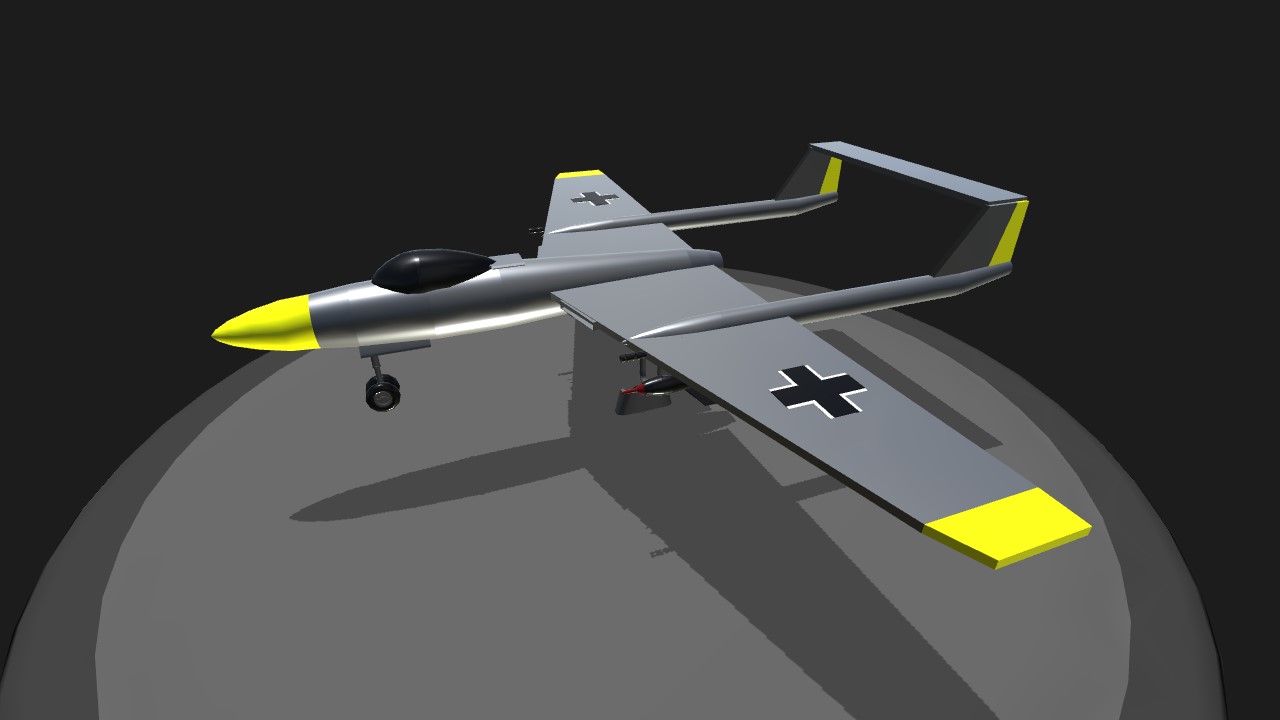
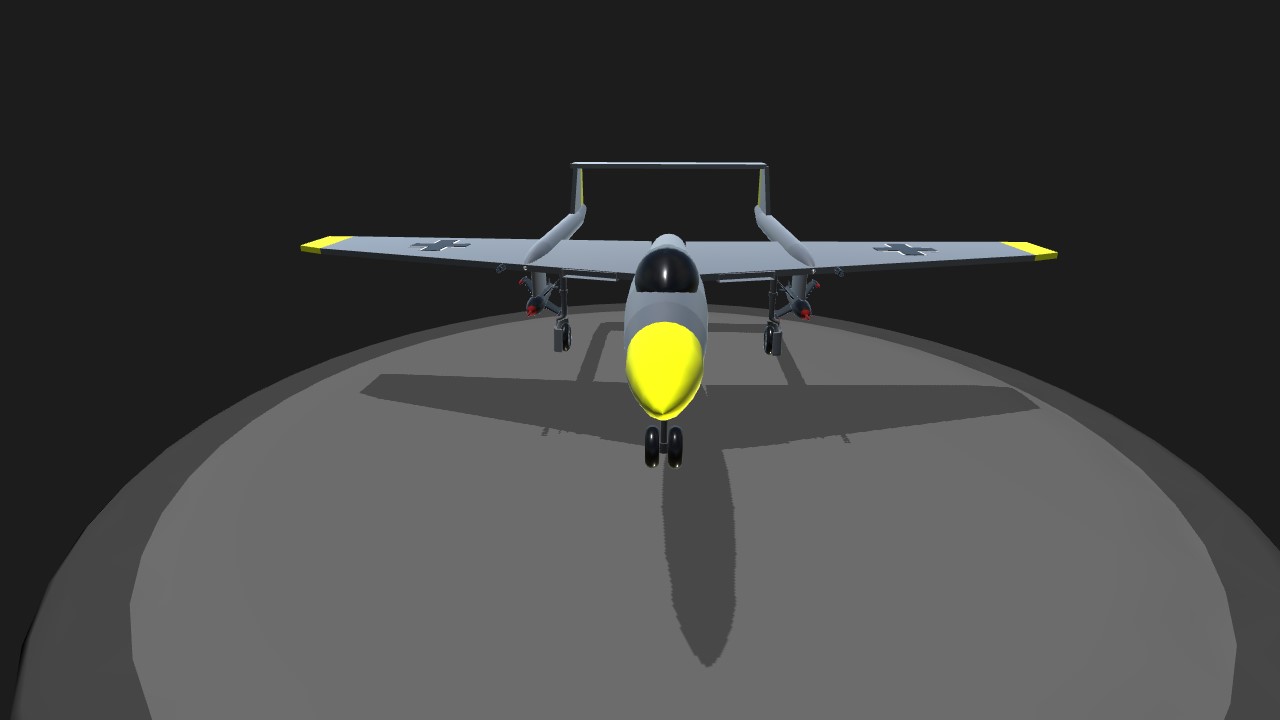
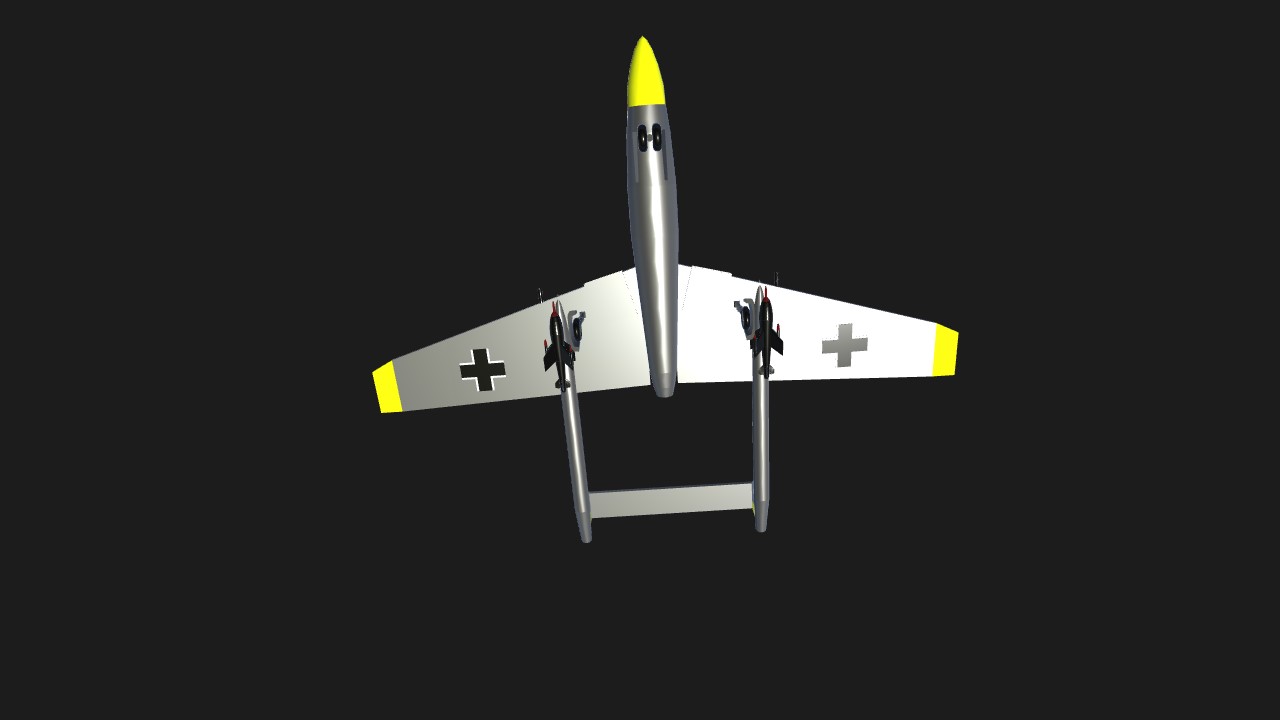
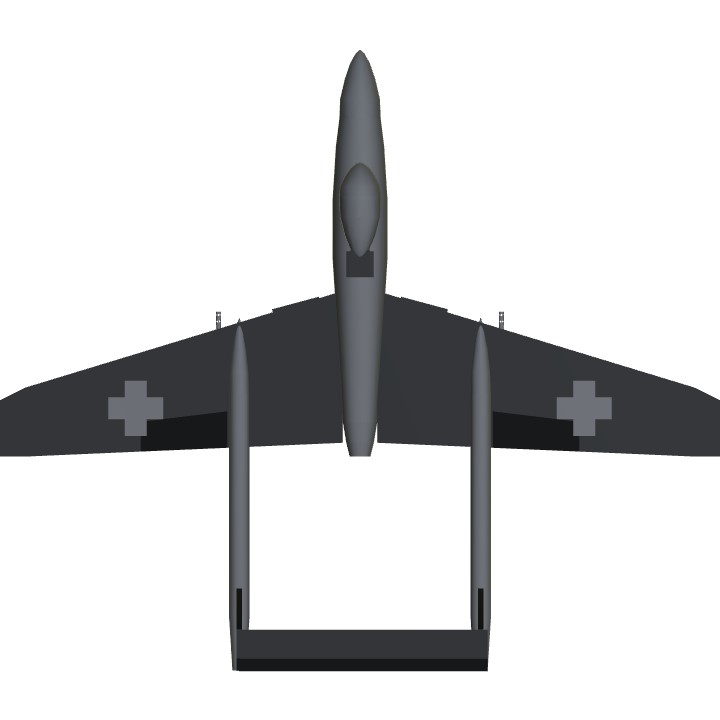
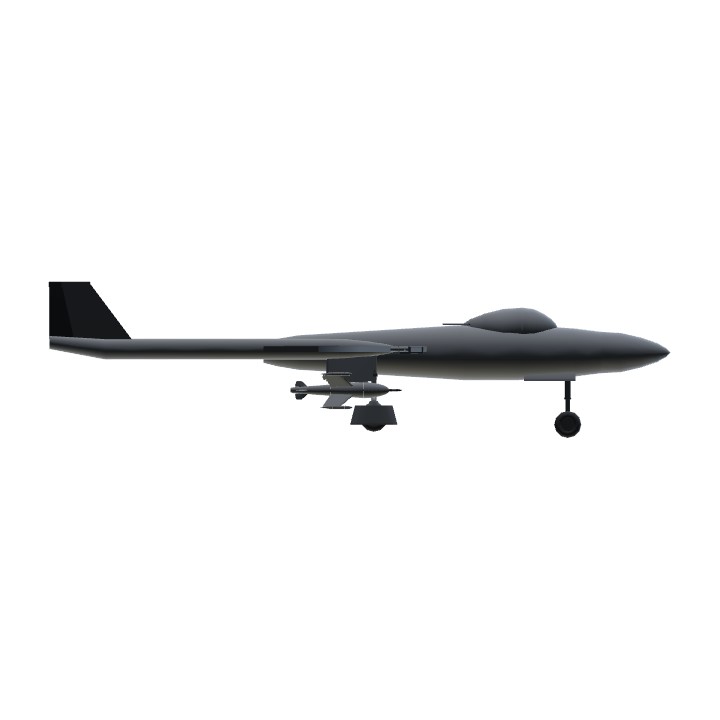
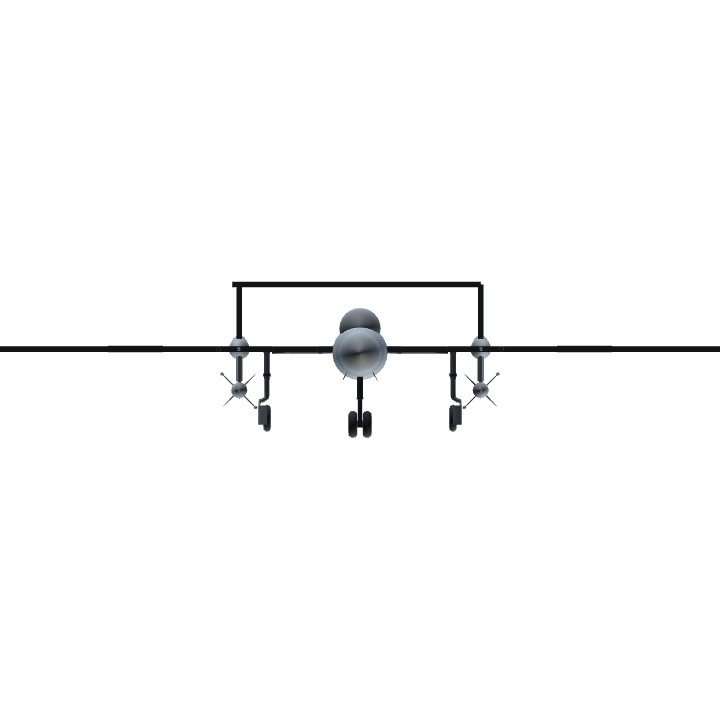
@Bearclaw189 no problem!
They are not my missiles, I don’t know who made them, I just found them in HMU sub assemblies, thank you anyway though. @Mustang51
Cool aircraft! I especially like those missiles!
Thank you @TheRussianBrothers69